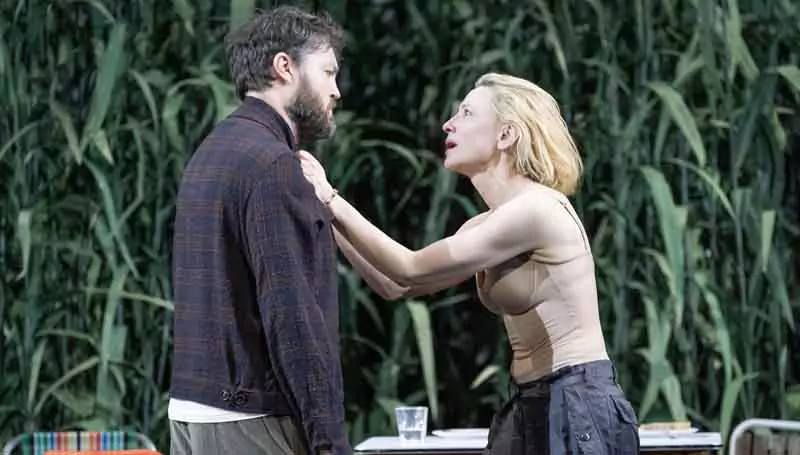
Where The Three Sisters feels like a novel to me, The Seagull reads like a lyrical poem, its unspoken words and unacted actions carrying more weight than the dialogue itself. When it premiered in St. Petersburg in 1896, Chekhov slipped out during the second act—apparently, the performance was so dire it lost all the meaning he’d intended. It wasn’t until the Moscow Art Theatre took it on that the play found its footing. Stanislavsky and his company delivered the subtle staging needed to unearth the inner conflicts of characters who sidestepped traditional heroes and villains, highlighting the psychological over the obvious.
I mention this historical note because it might explain why my relationship with this play feels so fraught. It’s not an easy work to stage, nor a simple one to reimagine. Anya Reiss’s “unique 21st-century modernisation” at the Pinter was one of the most excruciating theatre experiences of my life, so I approached yet another Seagull for the 21st century with caution. My unease grew after witnessing Sigourney Weaver tackle Prospero, compounded by the steep ticket price. Was I setting myself up for another expensive letdown?
My fears were somewhat assuaged as I entered and saw a dense thicket of twitching rushes and a vast cyclorama—no pine coffin or cheap plastic conference chairs in sight. Though the dynamic microphones, obstructing my view half the time without clear purpose, felt oddly out of place. Modernity hit fast when Simon, with his Brummie accent, rolled in on a quad bike, broke the fourth wall, and chatted with the audience whilst singing a Billy Bragg tune. The parallel between the bourgeois characters debating art and love and us, the upper-middle-class, well-read theatregoers, drawn with not too subtle a hand.
Yet, despite this bold start, the adaptation did not feel overly contemporary— rather it was somewhat suspended in time, not quite 19th century, nor fully 21st, despite VR headsets and mentions of airport books. It’s as if Ostermeier couldn’t decide between a traditional Seagull and a modern one.
What he clearly wanted, though, was an unforgettable Arkadina. And Blanchett is phenomenal. She brings to stage the kind of satirical energy that mere mortals can only dream of —grandiose gestures, eye rolls visible from the Barbican’s depths, splits, tap dancing, the works. It’s a biting, hilarious send-up of celebrity, a fresh take on Chekhov’s grand dame. You half-expect her to demand an all-white dressing room.
Then it all crumbles as she becomes the rejected woman, pleading with her lover not to leave for the younger model. Raw, vulnerable, naturalistic – unguarded emotion that pulls at your heart.
The rest of the cast however cannot quite live up to this. It’s not that they’re weak by comparison; they simply don’t claim their characters as their own. I’d seen so many of them in other roles. Tom Burke’s Trigorin felt almost indistinguishable from Cormoran Strike; Tanya Reynolds’s Masha echoed every other part she’s played, from Lily in Sex Education to Licisca in The Decameron. And Emma Corrin’s Nina lacks the feminine, delicate, ethereal quality tied to conventional femininity in Chekhov’s era—instead, she projects her own “non-binary” persona. The symbolic tie to the seagull vanishes, and the overly drawn-out exchange about art and celebrity between Nina and Trigorin becomes the most exhausting stretch of the performance.
Honestly, it’s hard to watch these two female characters—one draped in emo garb, the other frail to the edge of anorexic—next to Blanchett’s radiant vitality and zest for life. Why Trigorin or Konstantin (or any warm-blooded man I’ve ever known) would fall for this Nina or Masha completely eludes me
So overall, whilst I left the theatre having enjoyed myself, despite bits of unnecessarily long dialogue and vistas obscured by microphones, I also left with a yearning for just a plain, classic – costumes, dacha and all – rendition, where I can clearly point out the Chekhov’s Gun foreshadowing and have actors embody their characters, not themselves.